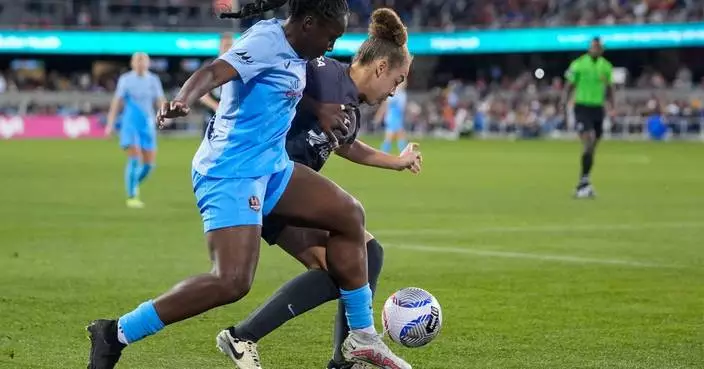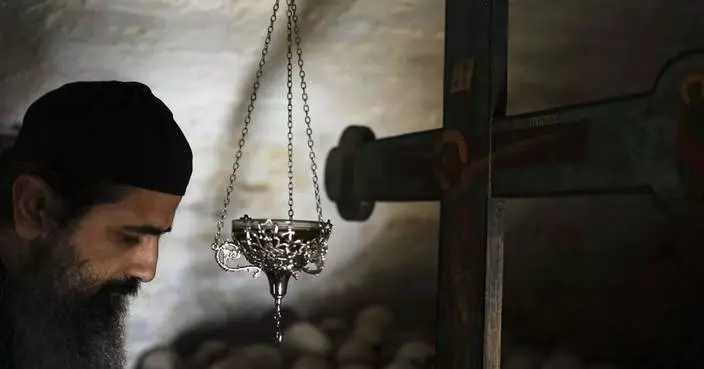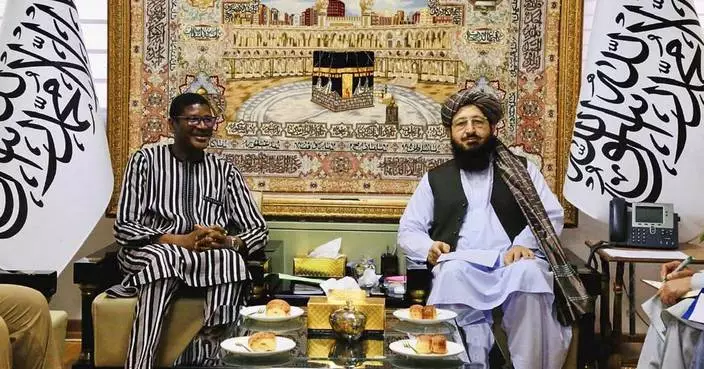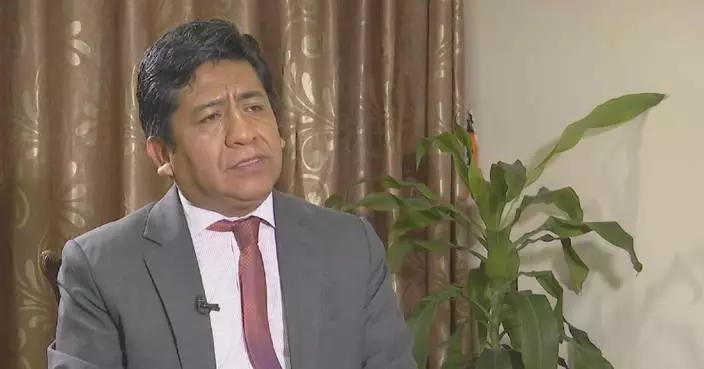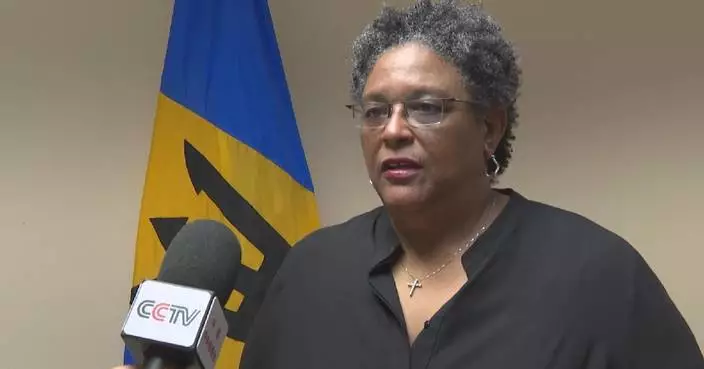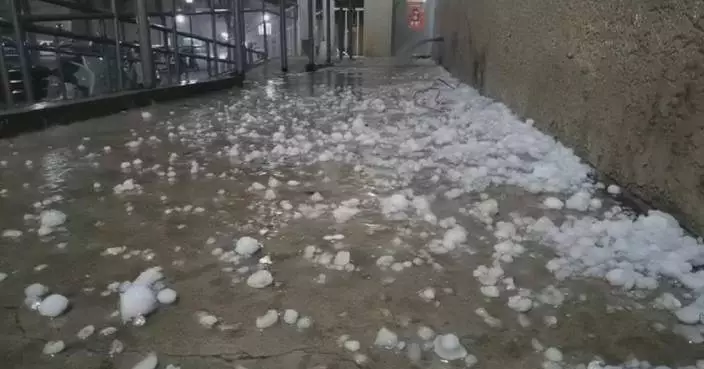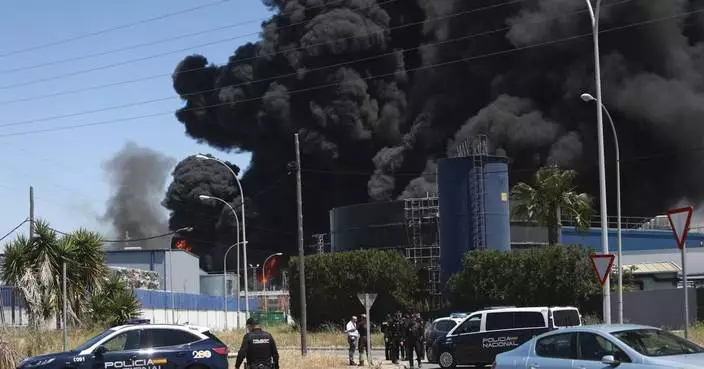Dricus Du Plessis didn’t like the way his first meeting with Sean Strickland ended in a split decision a little more than a year ago, so he made sure there was no doubt on Sunday at UFC 312 in Sydney.
In a rather lackluster rematch, Du Plessis retained his middleweight belt with a dominating unanimous decision over a bloodied Strickland.
“This was a big proving point for me, (but) I don’t want to make it a habit of these decisions," Du Plessis said. “The game plan here was stay calm, because (my coach) said, ‘You know you can knock somebody out. We know you have that dog (in you). Try and stay calm.’ Because It was really hard once I saw him grabbing at his nose.”
It was the second title defense for the 31-year-old Du Plessis (23-2) after defeating Israel Adesanya with a fourth-round submission on Aug. 17 in Perth, Australia.
The first round saw Strickland (29-7) trying to establish his jab, while Du Plessis stayed aggressive with an array of kicks.
Strickland continued to approach his attacks cautiously in the second round, attempting to pick his spots. Other than a strong right hand early in the round, it was Du Plessis who won the significant-strikes battle, 28-17.
The third drew more boos than it did action through the first half of the round, until an overhand right, and later a spinning back fist by Du Plessis landed.
The fourth round saw the most action, with the champion breaking Strickland’s nose with a hard right punch and then applying nonstop pressure on his challenger. While the first three rounds were extremely close, Du Plessis dominated the fourth.
Du Plessis continued to pepper Strickland’s nose in the final round, while staying on the attack to confirm the win.
In the co-main event, women’s strawweight champion Zhang Weili (26-3-0) overcame a rough first round and controlled more than 21 minutes of her title defense against No. 1 contender Tatiana Suarez (11-1-0) to earn a unanimous decision to retain her belt.
Zhang has won her past four title defenses, three by unanimous decision and the other by second-round submission.
From the undercard:
Heavyweight Tallison Teixeira (8-0-0) made his UFC debut by scoring a first-round TKO over Justin Tafa (7-5-0). That made it eight straight bouts Teixeira has ended in the first round, this one lasting just 35 seconds.
In an action-packed light heavyweight bout, Jim Crute (12-4-2) and Rodolfo Bellato (12-2-1) both turned in impressive performances. Crute dominated the first round, while Bellato was better in the second. A very close third left the judges turning in a majority draw.
In a three-round welterweight bout, Jake Matthews (21-7-0) defeated Francisco Prado (12-3-0) by unanimous decision
AP sports: https://apnews.com/sports

FILE - Sean Strickland, right, hits Dricus Du Plessis during a middleweight title bout during the UFC 297 mixed martial arts event in Toronto, Jan. 21, 2024. (Nathan Denette/The Canadian Press via AP, File)
AHMEDABAD, India (AP) — For 20-year-old Mayank Yadav, riding a crowded bus in the summer months in this western Indian city can be like sitting in an oven. That makes it a treat when he steps off and into a bus stop outfitted with sprinklers that bathe overheated commuters in a cooling mist.
“Everyone is suffering from the heat,” Yadav said. “I hope they do more of this across the city.”
Rising heat is a problem for millions of people in India. In Ahmedabad, temperatures this year have already reached 42 degrees Celsius (107 Fahrenheit), a level usually not seen for several more weeks, prompting city officials to advise people to stay indoors and stay hydrated.
And yet, coping with that heat is a familiar challenge in Ahmedabad. After a 2010 heat wave killed more than 1,300 people, city and health officials rushed to develop South Asia's first heat action plan.
The plan, rolled out in 2013 and now replicated across India and South Asia, includes strategies for hospitals, government officials and citizens to react immediately when temperatures rise beyond human tolerance. Public health officials said it's helped save hundreds of lives every summer.
City officials, with help from climate and health researchers, have implemented two simple yet effective solutions to help those affected most by heat: the poor and those who work outdoors. By painting tin-roofed households with reflective paint, they've reduced indoor temperatures, which otherwise might be up to 5 degrees Celsius (9 degrees Fahrenheit) hotter than outside. More recently, the city hung curtains woven of straw and water sprinklers at one bus stop so commuters can get relief from the sun and heat. Officials said they plan to expand the idea to other bus stops in the city.
Residents said both measures have been a relief even as they brace for at least three more months of sweltering summer.
Throughout the city's low-income neighborhoods, hundreds of tin-roofed homes have been painted with reflective paint that helps keep the indoors cooler. Residents said their houses were so hot before the roofs were painted that they would spend most of their time outdoors under any shade they could find.
“Earlier, it was really difficult to sleep inside the house," said Akashbhai Thakor, who works as a delivery van driver and lives with his wife and three-month-old child in Ahmedabad. Thakor's roof was painted as part of a research project that is trying to measure the impact of the so-called cool roofs.
Early results have been promising. “After the roof was painted, the house is much cooler, especially at night,” said Thakor.
People like Thakor are much more vulnerable to extreme heat because their houses aren't insulated and, since most of them depend on a daily wage, they must work regardless of the weather, said Priya Bhavsar of the Indian Institute of Public Health Gandhinagar, who is working on the project. Bhavsar said low-cost solutions could be the only respite for thousands of people in the city who can't afford to buy an air conditioner.
Veer Vanzara, who lives in the same area as Thakor and works in a nearby garment factory, said the heat makes his job much worse, especially since his factory has no ventilation. So his family is grateful for the cool roofs. “The evenings and night are much cooler than before inside our house,” he said.
In Ahmedabad's city center, a 25-meter stretch of a bus stop has been draped with mats made of straw which, when sprinkled with water, immediately cool the hot wind. Sprinklers installed on the bus stop roof lightly spray cool water on the commuters below, providing instant relief from the blazing heat just a step away.
“When nothing like this was here, it was really hot. What they've done is really good. Senior citizens like me can get some cooling from the heat,” said 77-year-old Ratilal Bhoire, who was waiting under the sprinklers with his daughter. Bhoire said when he was younger, Ahmedabad was hot, but it was still possible to walk many kilometers without feeling dizzy, even at the height of summer. “Nowadays you can't do that,” he said.
Heat is the city's biggest problem and heat waves — continuous days of extreme heat — are increasing, said Dr. Tejas Shah of Ahmedabad Municipal Corporation, who oversees the city's heat action plan. “We are in the period of climate change, and it has already shown its effect,” said Shah.
Shah and other city officials said the onset of summer has become a testing time and efforts such as cool roofs and cool bus stops are reducing heat-related illness and deaths. As climate projections predict only hotter and longer summers for his city, Shah said being prepared is the only thing to do.
“It (the heat) needs to be addressed in the proper way," he said.
Follow Sibi Arasu on X at @sibi123
The Associated Press’ climate and environmental coverage receives financial support from multiple private foundations. AP is solely responsible for all content. Find AP’s standards for working with philanthropies, a list of supporters and funded coverage areas at AP.org.
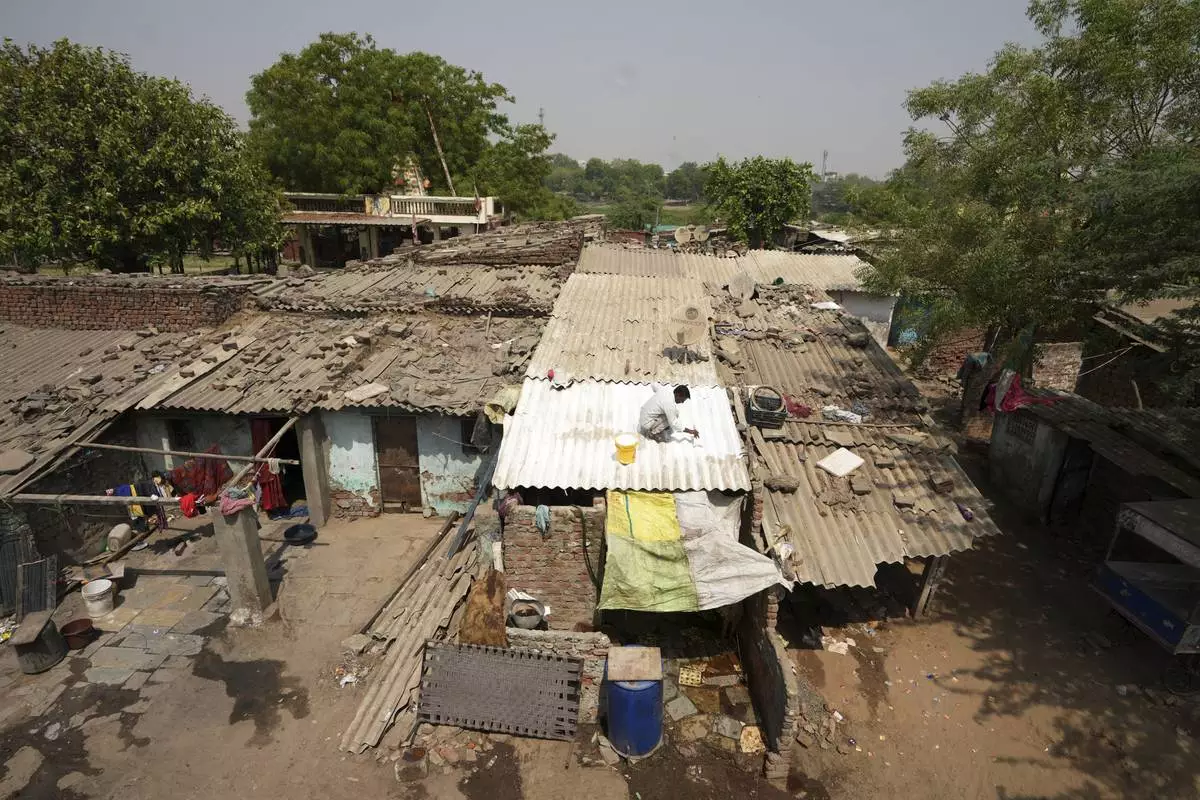
A man applies reflective paint to the roof of a house that helps keep the indoors cooler in Ahmedabad, India, Wednesday, April 2, 2025. (AP Photo/Ajit Solanki)
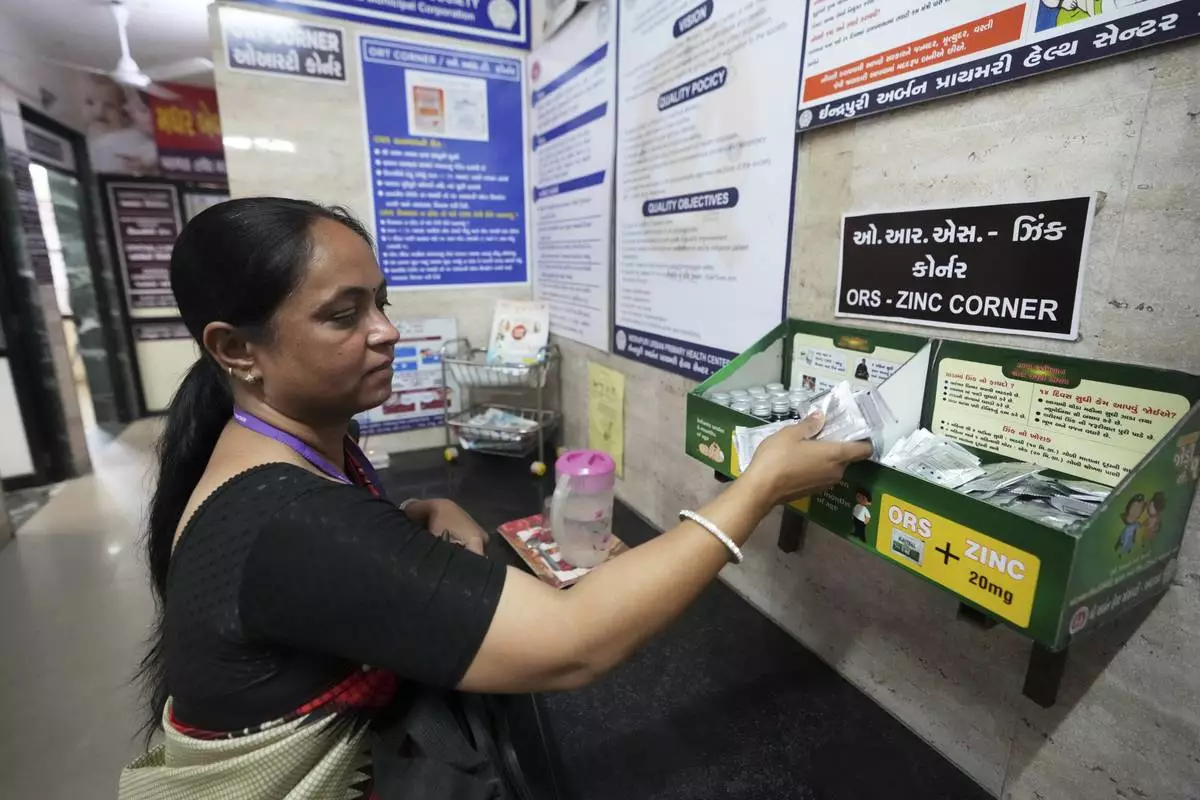
Asha worker Shashi Mishra collects oral rehydration solution pouches before leaving for her job from an urban health center in Ahmedabad, India, Wednesday, April 2, 2025. (AP Photo/Ajit Solanki)
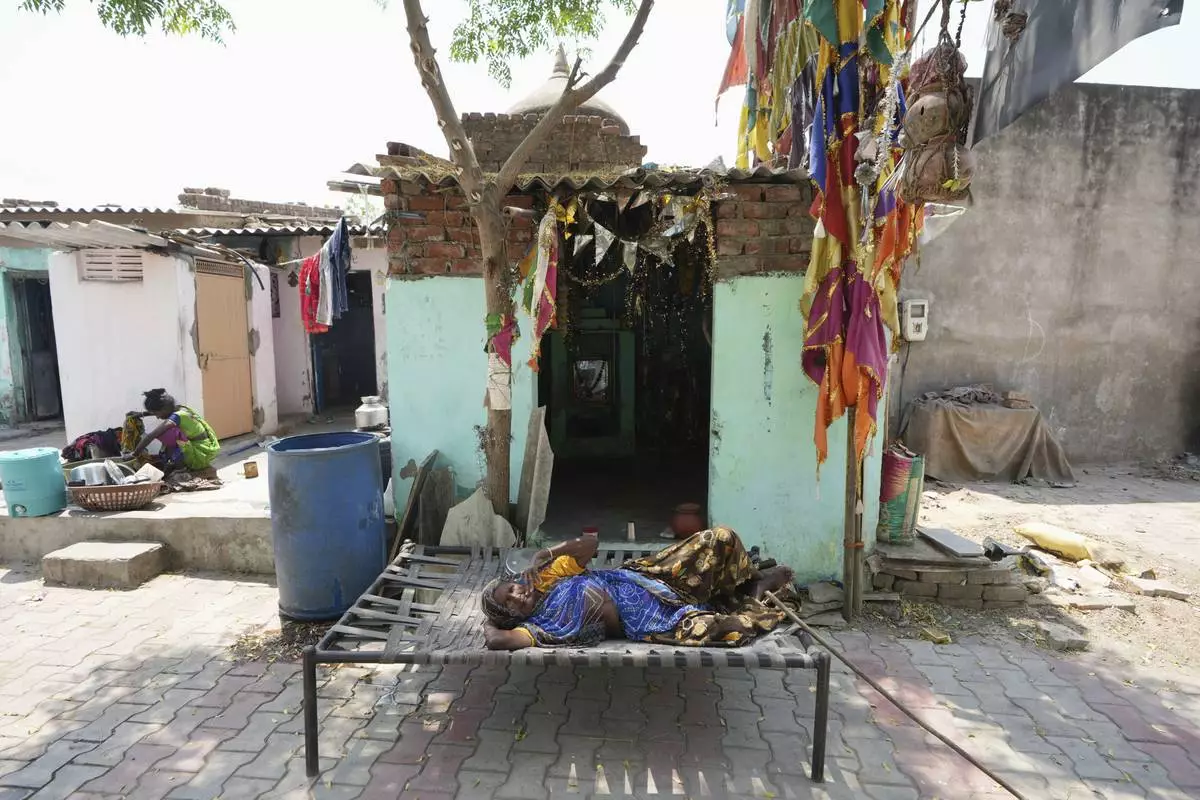
An elderly woman rest in the shade of a tree in Ahmedabad, India, Wednesday, April 2, 2025. (AP Photo/Ajit Solanki)
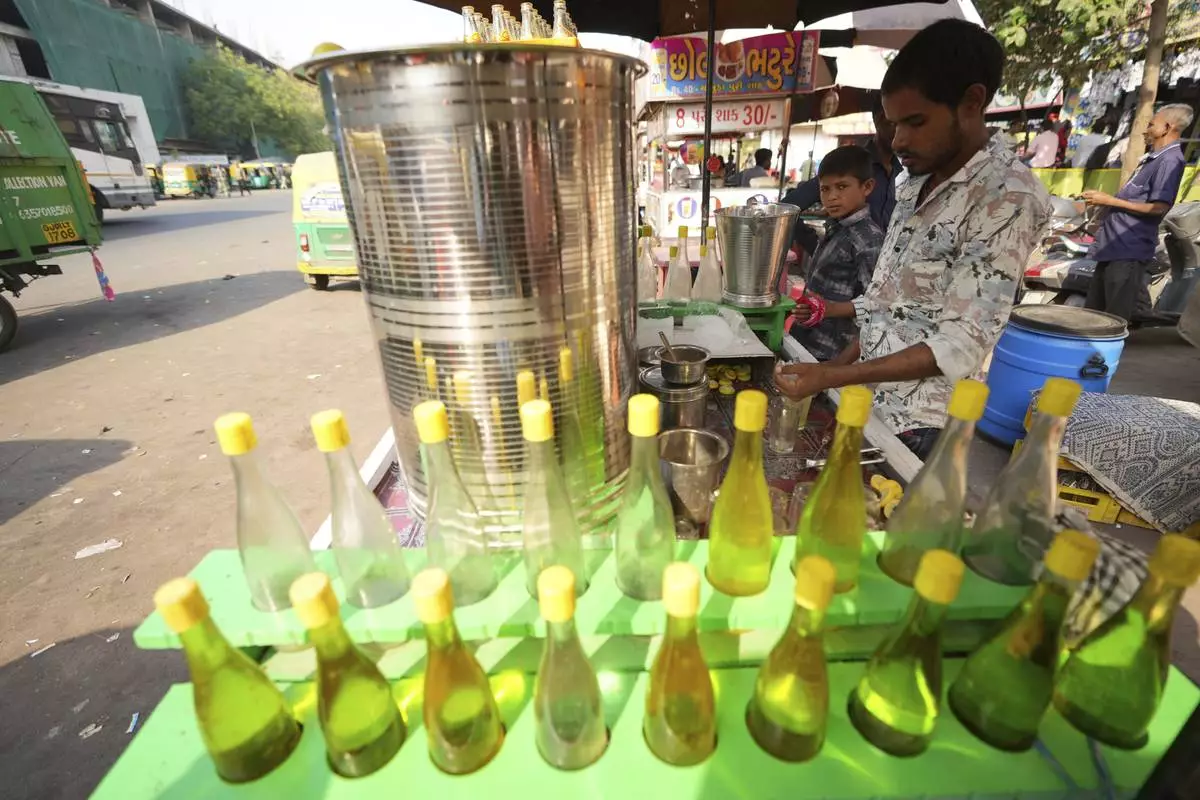
Mukesh Patni makes lime juice at his stall in Ahmedabad, India, Wednesday, April 2, 2025. (AP Photo/Ajit Solanki)
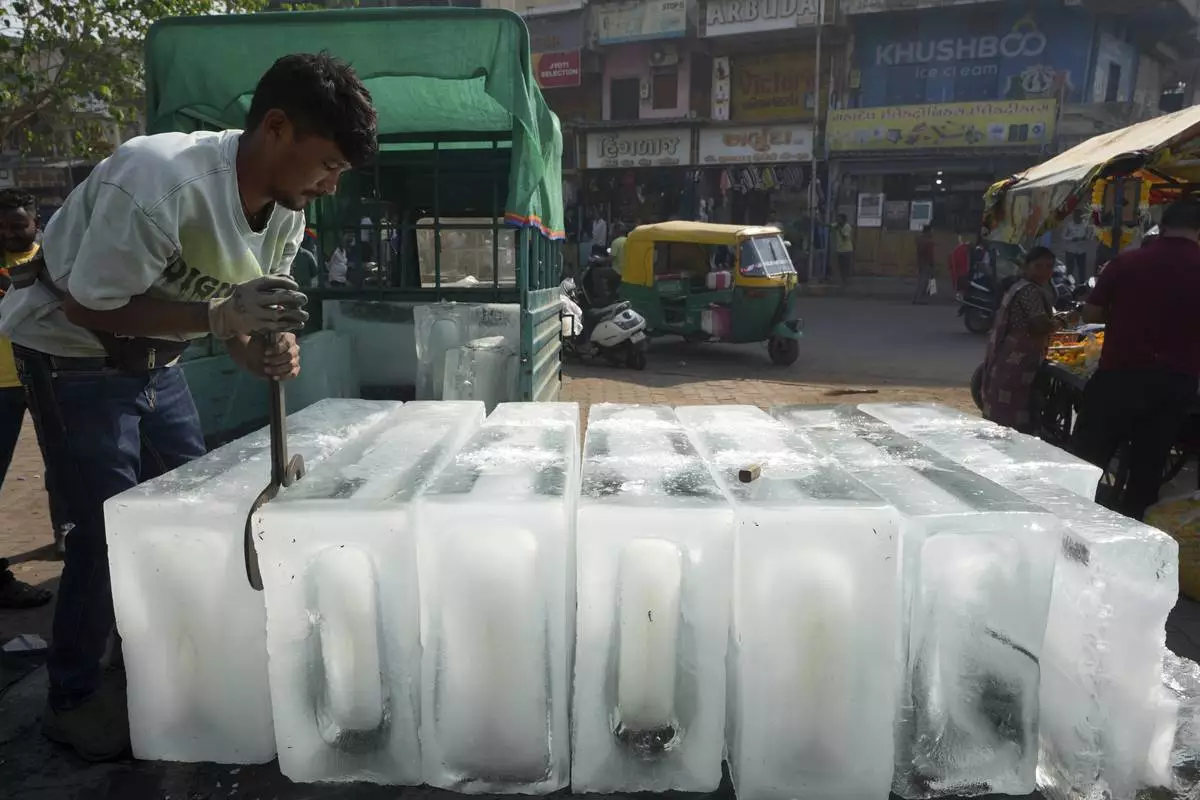
A man arranges ice blocks to sell at his stall in Ahmedabad, India, Wednesday, April 2, 2025. (AP Photo/Ajit Solanki)

People drink water at a distribution center at a bus stop in Ahmedabad, India, Wednesday, April 2, 2025. (AP Photo/Ajit Solanki)
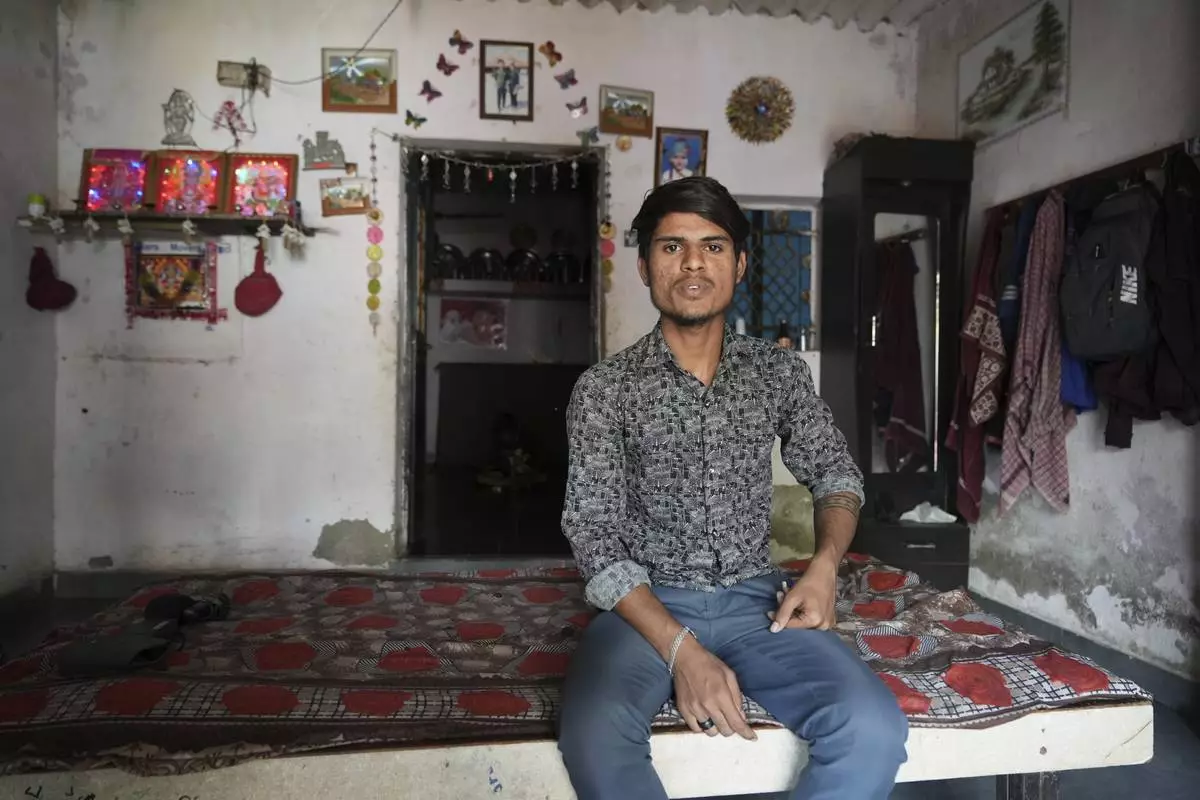
Veer Vanzara sits inside his house with reflective paint on the roof that helps keep the indoors cooler in Ahmedabad, India, Wednesday, April 2, 2025. (AP Photo/Ajit Solanki)
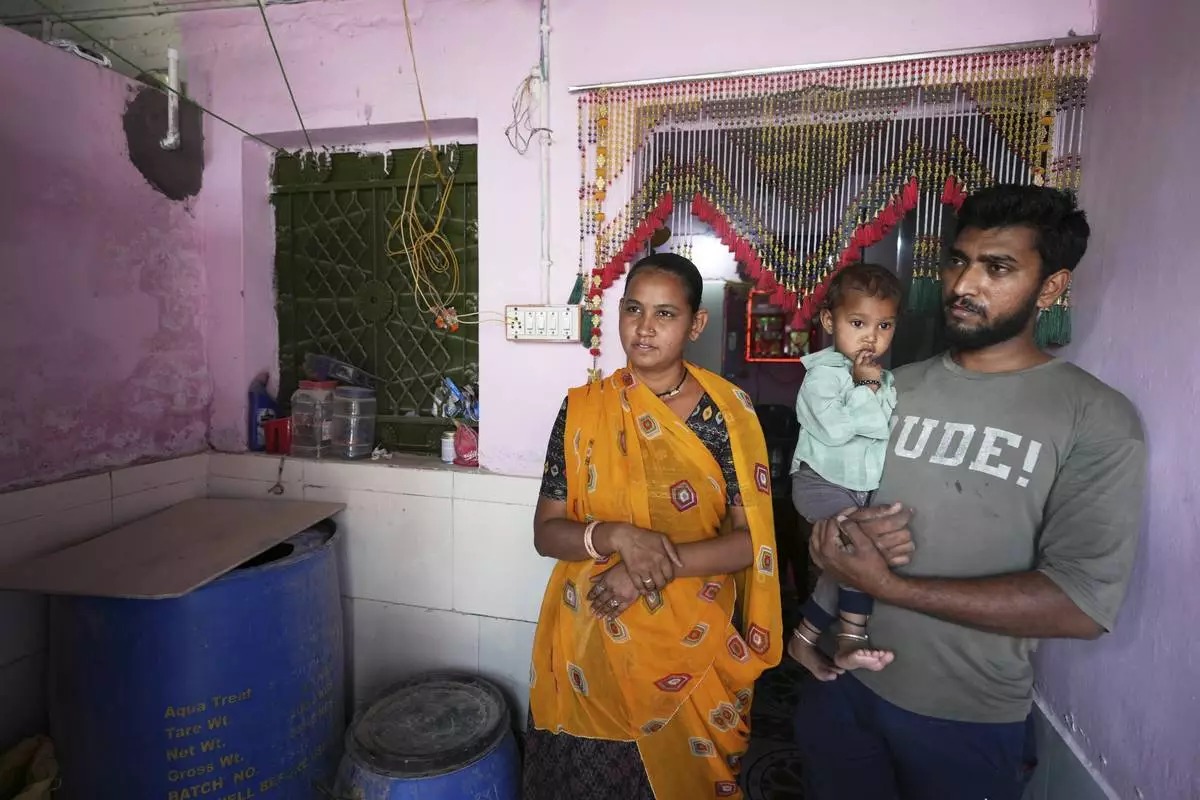
Akashbhai Thakor, right, and his wife Kumud stand at their house in Ahmedabad, India, Thursday, April 3, 2025. (AP Photo/Ajit Solanki)

Priya Bhavsar, of the Indian Institute of Public Health Gandhinagar, speaks with The Associated Press in Ahmedabad, India, Wednesday, April 2, 2025. (AP Photo/Ajit Solanki)
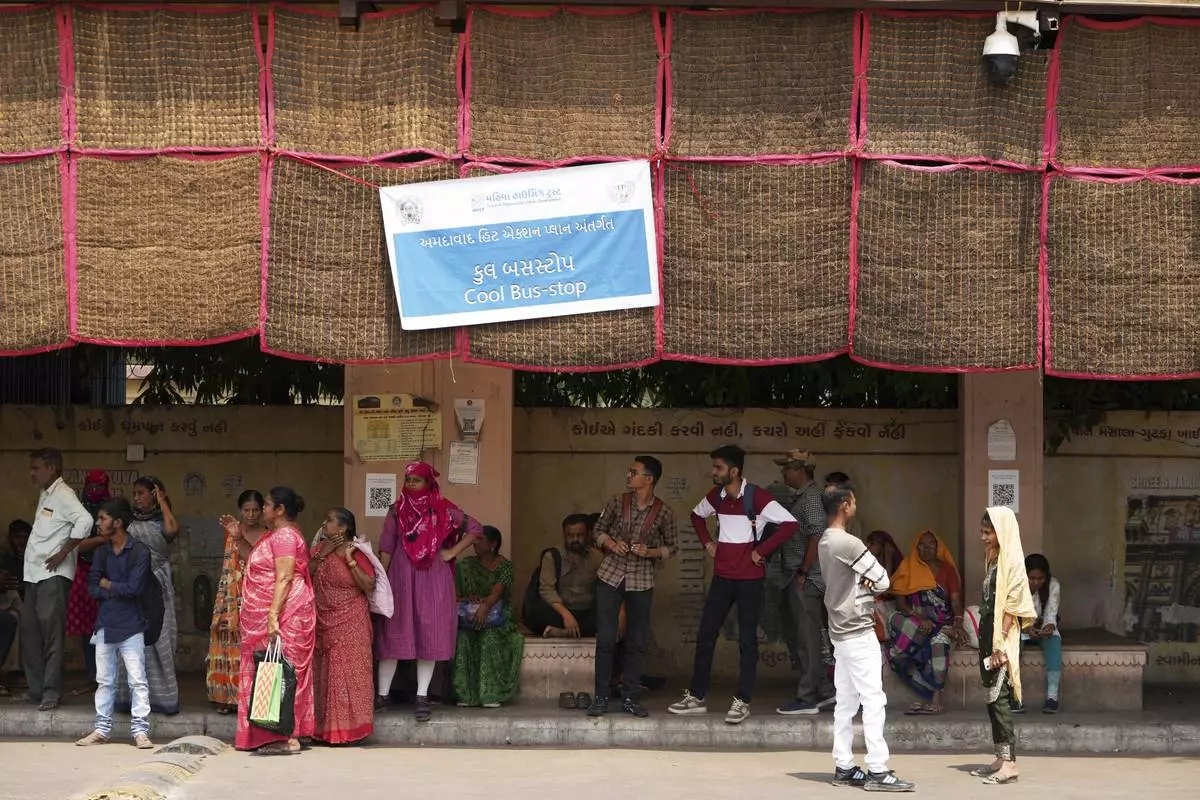
People wait for a bus at a cool bus stop in Ahmedabad, India, Wednesday, April 2, 2025. (AP Photo/Ajit Solanki)
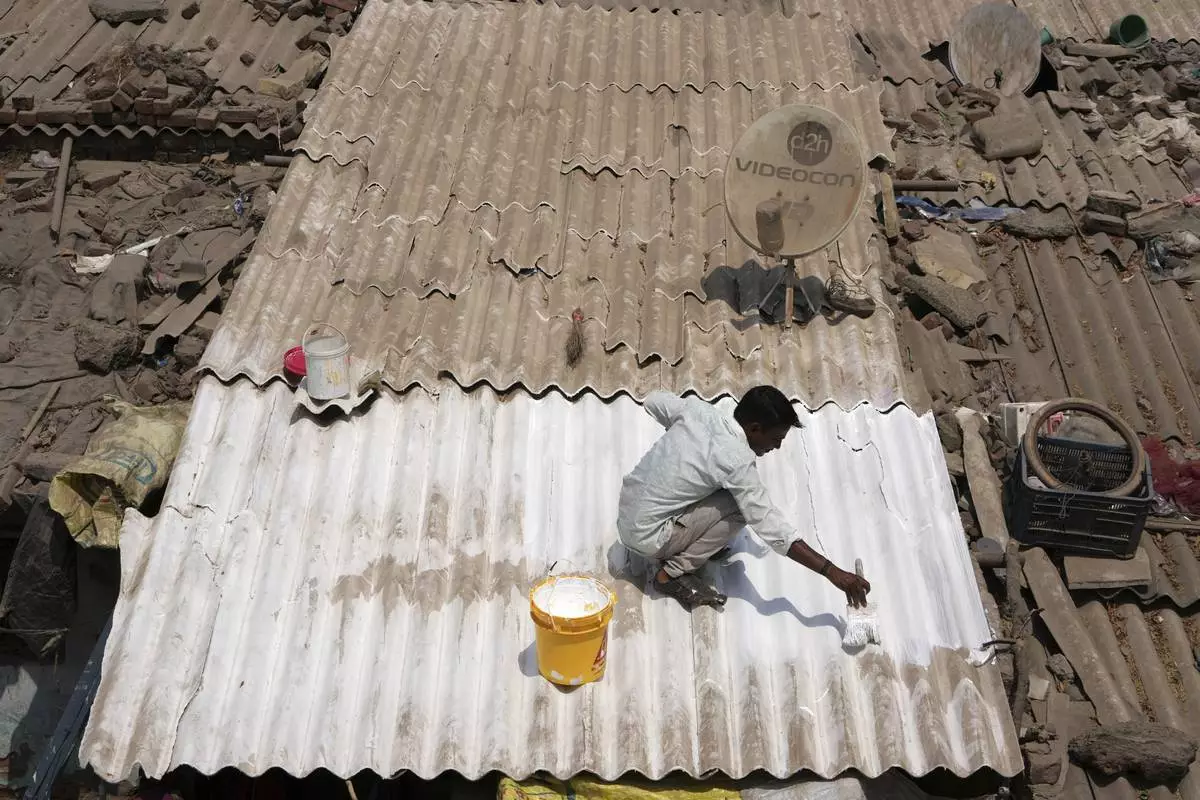
A man applies reflective paint to the roof of a house that helps keep the indoors cooler in Ahmedabad, India, Wednesday, April 2, 2025. (AP Photo/Ajit Solanki)
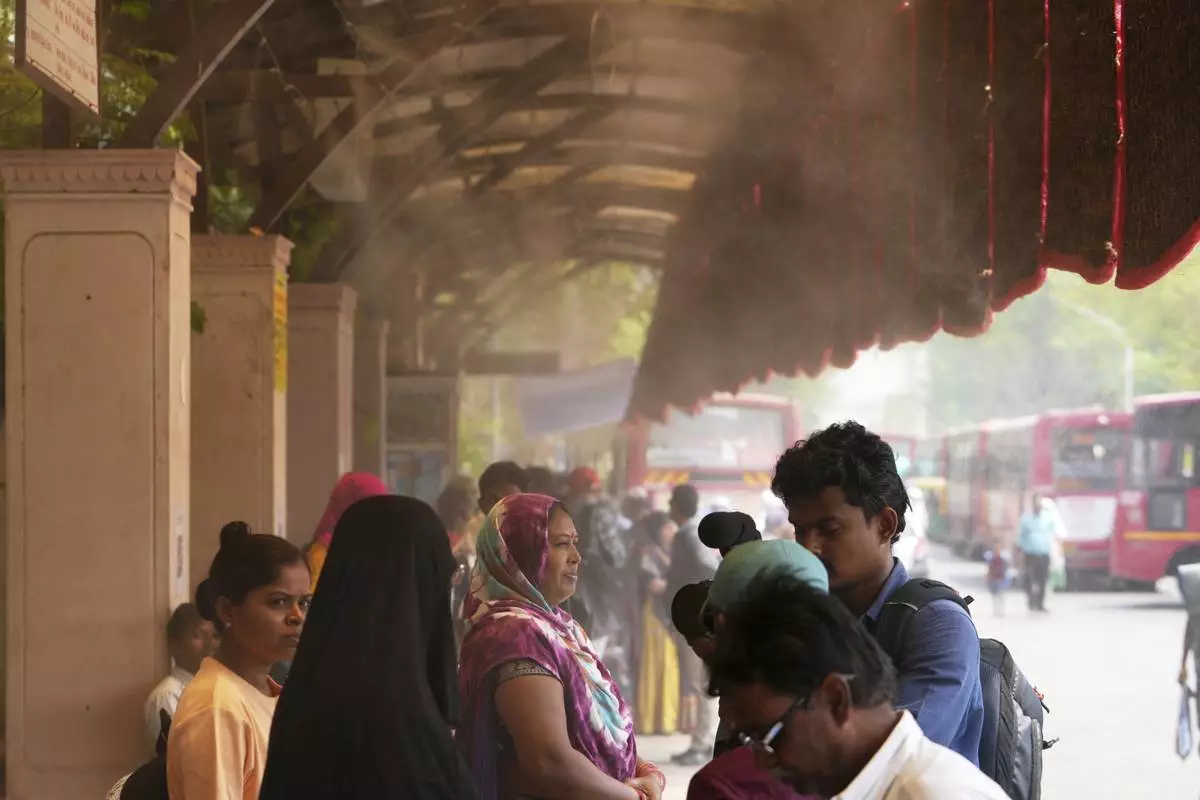
People wait for a bus at a cool bus stop in Ahmedabad, India, Wednesday, April 2, 2025. (AP Photo/Ajit Solanki)



















